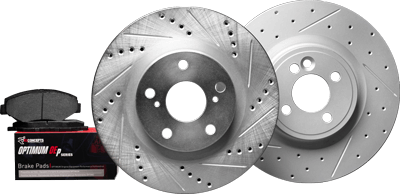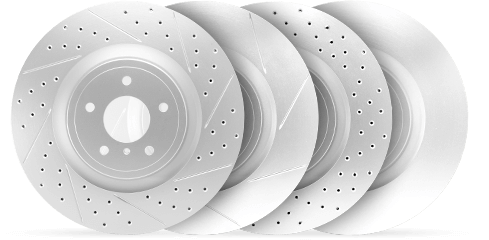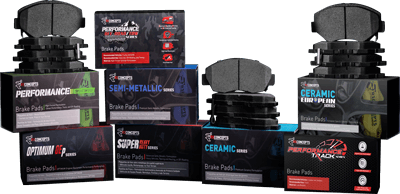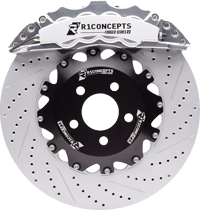Do you resurface rotors or opt for full replacement? This pressing concern affects your vehicle’s braking effectiveness and your expenditure. Prioritizing clarity, this piece contrasts resurface rotors vs replace, breaking down each strategy’s impact on cost, safety, and rotor longevity to guide your decision.
Key Takeaways
- Resurfacing rotors is cost-effective and can address minor warping, but may reduce rotor lifespan and is unsuitable for deeply grooved or cracked rotors.
- Replacing rotors ensures optimal braking performance and eliminates the chance of lingering damage, though it is generally more expensive due to the cost of new rotors and labor.
- There are specific safety and performance considerations for resurfacing or replacing rotors, with replacement typically offering greater reliability and resurfacing potentially leaving rotors thinner and more susceptible to wear.
Rotor Resurfacing Advantages And Disadvantages
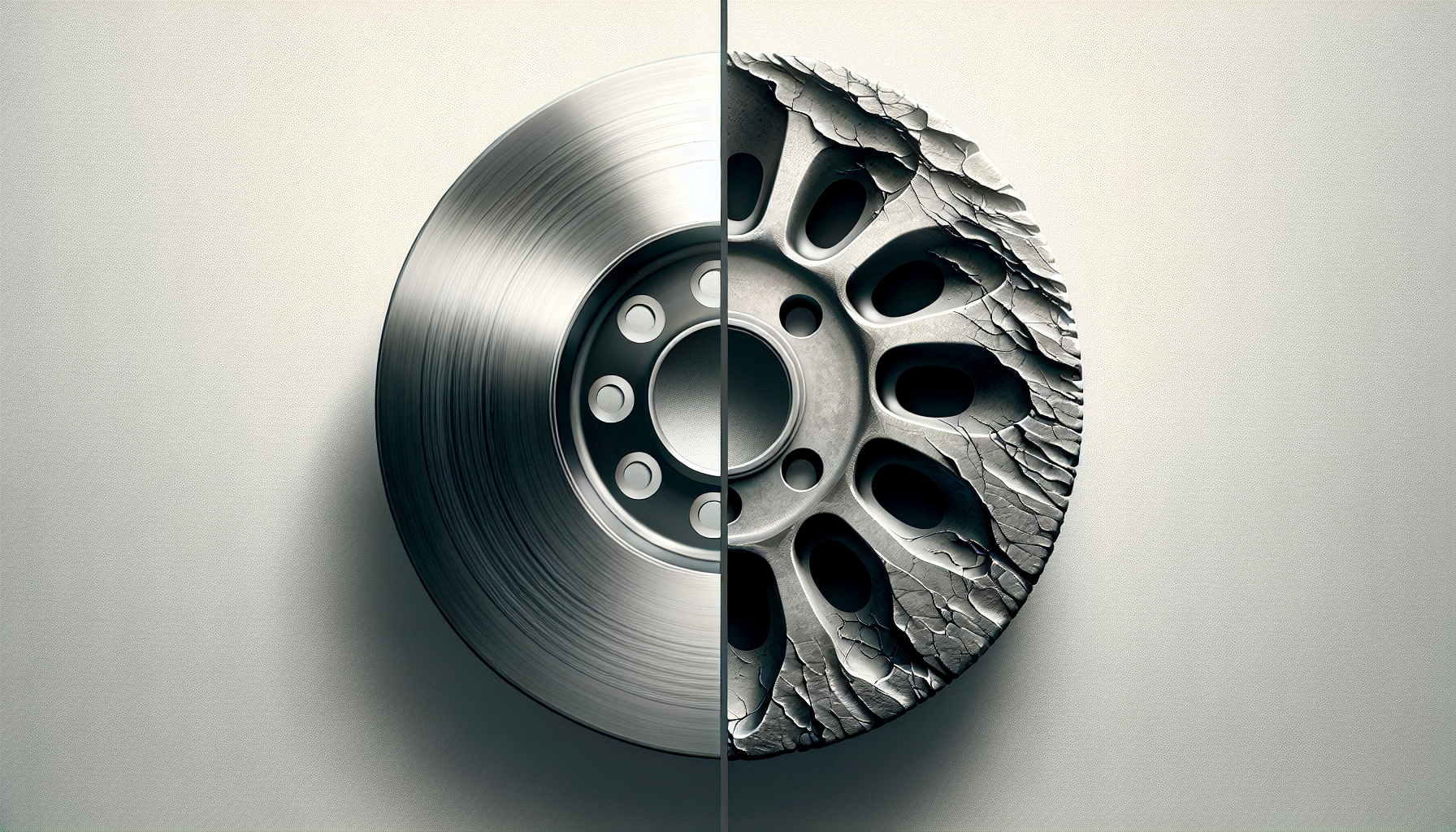
The procedure of rotor resurfacing involves the smoothing out of the brake rotor’s surface to eliminate any uneven wear or slight distortions that might have developed with time.
- Economical and can extend the service life of rotors
- Improves braking smoothness and can correct minor warp issues
- Utilizes a brake lathe for effectiveness
However, rotor resurfacing does come with some disadvantages:
- Shaving off metal can reduce overall rotor thickness and lifespan
- Not suitable for rotors with deep grooves or cracks
- Must maintain minimum thickness standards for safety
- Potential for warping issues to persist even after resurfacing
Rotor Replacement Advantages And Disadvantages
Alternatively, when you opt to replace the rotors instead of resurfacing them, there are numerous benefits associated with new brake rotor replacement.
- A fresh surface is provided by new rotors which ensures peak braking efficiency.
- Replacing your worn or damaged rotors diminishes the risk of any pre-existing damage impacting your vehicle’s braking capabilities, enhancing overall safety.
- Warranties are often included with new rotor purchases, offering additional security for your expenditure.
- Typically faster than resurfacing procedures, replacing the rotors means less time before you can resume driving.
The primary drawback of opting for rotor replacement over resurfacing is related to expense. The cost involved in this method tends to exceed that of simply refinishing existing surfaces due primarily to purchasing brand-new brake rotors. Yet given the significant gains in terms of safety and operational performance, investing in replacements may prove valuable on many occasions.
Cost Comparison: Resurfacing vs. Replacing Rotors
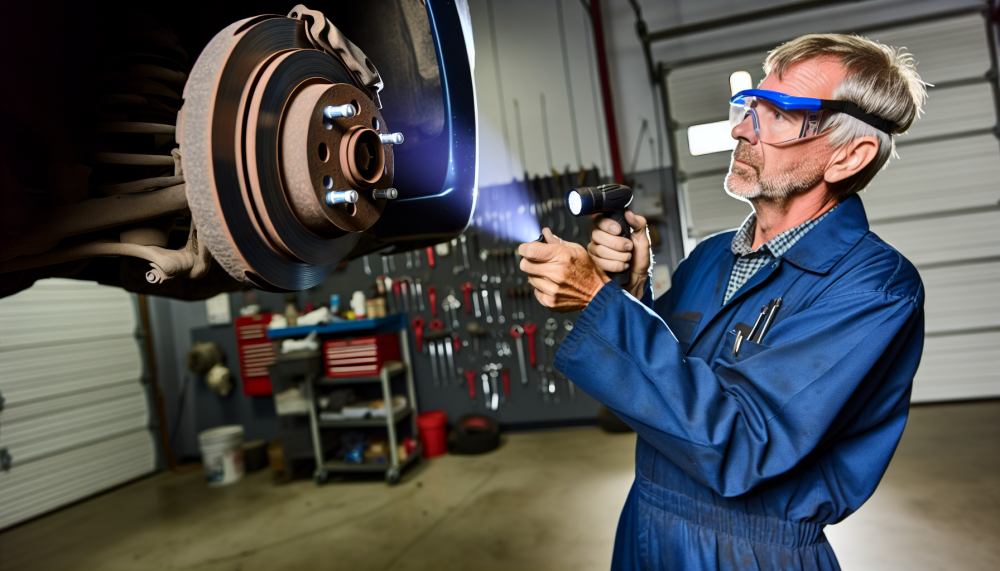
Understanding the cost of rotor upkeep involves looking at how much you will spend if you choose to smooth out your rotors (resurfacing) versus buying new ones (replacing). We will discuss the money involved in both options, considering things like how much you pay for work done and the state of your rotors.
Cost to Make Rotors Smooth Again (Resurfacing)
Making your brake rotors smooth again, which is called resurfacing, is generally the cheaper option. It usually costs between $40 to $65 for each rotor, and this includes the materials needed and the work.
While this choice can save money at the start, it’s important to think about the future. Rotors that are almost too thin might need more work or might have to be replaced sooner after being made smooth.
However, if your rotors are still strong and thick enough, making them smooth again can help them last longer without costing too much.
Cost to Get New Rotors (Replacing)
Buying new brake rotors is more expensive. The cost for each new rotor is often between $30 to $75, and this does not include the extra cost for putting them in. For some types of cars, the price for rotors can be even higher, from $50 to $80 each.
Although it costs more at the beginning to get new rotors, there are good points that might make it a valuable choice for the future.
- Brakes work better with new rotors.
- It could be safer to drive.
- They usually come with a promise of quality or a warranty.
- For some cars, getting new rotors might be better for saving money after a while.
Safety Considerations: Resurfacing vs. Replacing Rotors
When thinking about your vehicle’s brakes, safety is very important. You must carefully think about safety when deciding to either make your rotors smooth again (resurfacing) or get new ones (replacing).
Safety Concerns with Making Rotors Smooth Again (Resurfacing)
When you make rotors smooth again, you take off a layer of metal. This can make the rotor thinner. Thinner rotors can wear out faster, and this can lead to problems like getting too hot or not being balanced. This might make your car shake or vibrate when you brake.
If not done right, making rotors smooth again can also cause problems. If too much metal is taken off, or if the machines used are old and worn out, it can make the rotor vibrate and not wear evenly. This can make your brakes not work as well and can be dangerous.
Safety Benefits of Getting New Rotors (Replacing)
Getting new brake rotors helps keep you safe. New rotors have the right thickness and no uneven spots. This gives you a better surface for braking, which makes driving safer.
When you install new brake rotors, like the kind with slots, you get:
- A better and more reliable braking experience, which is very important for staying safe.
- More control of your car with shorter stopping distances.
- Better cooling from the heat of braking, which lowers the risk of brake failure and helps you keep control of your car.
Identifying When to Resurface or Replace Rotors
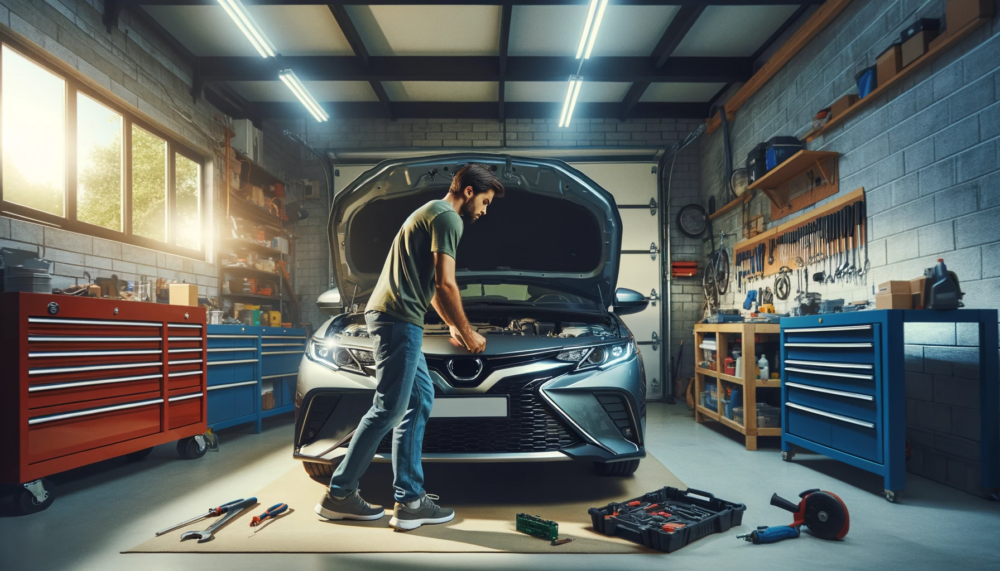
To maintain optimal braking performance, it’s essential to identify the appropriate moment for either resurfacing or replacing your rotors. We must consider various indicators of wear on the rotor and adopt a proper technique for assessing rotor thickness.
Signs of Warped Rotors
Often, certain symptoms can alert you to the need for maintenance on warped rotors. Vibrations or atypical sounds when engaging the brakes are common signs that may be noticed through the brake pedal or steering wheel, pointing towards rotor warping.
Abnormal noises while braking, like grinding, could indicate a problem with your rotors. Physical imperfections visible on the surface of the rotor such as indents, chipping and uneven wear patterns should also warn that it’s time to inspect your vehicle’s rotors for potential issues.
Evaluating Rotor Thickness
Determining the thickness of your vehicle’s rotors is essential for deciding whether they should be resurfaced or need to be replaced. Rotors can only be resurfaced if they remain above a certain minimum thickness post-resurfacing, as mandated by the vehicle manufacturer.
Should your rotors wear down too much, or if resurfacing them would cause them to fall below this specified minimum thickness, replacing the rotors becomes necessary. It’s important to consistently monitor rotor thickness in order to maintain optimal braking performance and extend the life of brake pads.
DIY Rotor Resurfacing vs. Professional Service
Regarding rotor resurfacing, you have the choice to either tackle it yourself or hire an expert. Your decision between these options should be based on your own mechanical proficiency, the tools at your disposal, and financial considerations.
Pros and Cons of DIY Rotor Resurfacing
Resurfacing rotors on your own can be cost-effective and rewarding, yet it requires technical expertise and appropriate tools. Lacking in these could lead to inconsistent wear of the rotor, compromising both the safety and performance of your vehicle.
DIY resurfacing quality might not match up to that achieved with professional equipment. For unique or vintage vehicles or high-end models where replacement parts come at a premium, opting to resurface rotors yourself may economically prolong their lifespan while enhancing stopping power.
Benefits of Professional Rotor Resurfacing
Utilizing professional resurfacing services provides accuracy and skills that may not be achievable through do-it-yourself approaches. Technicians employ specialized machinery to attain a rotor surface with the ideal specifications necessary for effective friction, proper seating of the pads, and diminished sound levels.
The advantages of having rotors professionally resurfaced include:
- An even surface finish that can prolong the durability of your brake pads
- Enhanced stability and consistency in braking functions
- A decrease in noise and vibration which enhances overall driving comfort.
Lifespan of Resurfaced Rotors vs. New Rotors
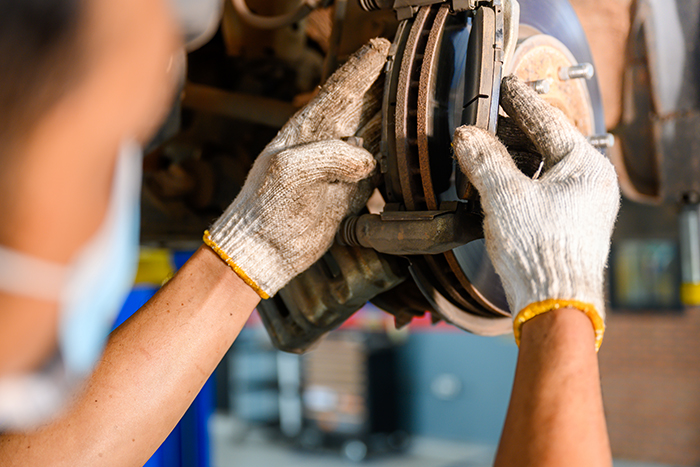
When planning maintenance, it’s essential to take into account the longevity of your machine rotors. This is vital as it has a direct impact on the condition of the rotor’s surface.
Now, let’s examine how resurfaced rotors stack up against new ones in terms of their average service life.
Lifespan of Resurfaced Rotors
Rotors that have been resurfaced can often endure as long as they did when first installed, typically ranging from 50,000 to 70,000 miles. The actual longevity of these components is subject to variation due to the driver’s style on the road, the specific vehicle in question, and what kind of brake pads are used.
It should also be taken into account that:
- There’s a finite limit to how many times rotors can undergo resurfacing
- Every time a rotor goes through a machining process, it loses some amount of metal
- Consequently over time this may result in the rotor becoming excessively thin which could compromise its safe functionality.
Lifespan of New Rotors
On the other hand, brake rotors typically endure from 30,000 to 70,000 miles before needing replacement or resurfacing because of wear. This longevity can be influenced by several variables including the style of driving, the heaviness of the vehicle and the quality of the rotor itself.
If maintained correctly and attended to regularly, new brake rotors have a potential for extended service life. Although they come with a greater initial expense, this investment can prove valuable as it may ensure superior braking capability over a prolonged duration.
How Resurfacing Rotors Affects Brake Pad Wear
The condition of your rotors significantly affects the rate at which your brake pads degrade. It’s crucial to examine the impact that resurfacing rotors has on brake pad longevity and identify methods to extend the life of pads when using resurfaced rotors.
Effects of Resurfaced Rotors on Brake Pads
Having your brake rotors resurfaced can lead to less wear on the brake pads by creating a smooth surface that reduces uneven contact and abrasion. When you return your rotors to an even, polished state, it promotes better interaction between the pads and rotors, thus improving the efficiency of your braking system.
Resurfacing your rotors so they are fresh helps prolong the life span of your brake pads. A pristine and uniform rotor surface allows for ideal friction conditions which slow down the degradation process on your brake pads, helping avoid premature wear out of these critical components.
Tips for Maximizing Brake Pad Life with Resurfaced Rotors
Ensuring that your rotors are perfectly level following the resurfacing process is key to enhancing the longevity of brake pads. When accomplished, it minimizes irregular wear on the pads and consequently prolongs their life, offering you both long-term savings and reduced maintenance frequency.
It’s equally important to select suitable brake pads for use with resurfaced rotors in order to maximize pad durability. Adhering to your vehicle manufacturer’s advice or consulting with a reliable mechanic can guide you in making an informed decision when choosing new brake pads that are designed to work well with newly smoothed surfaces.
Situations Where Resurfacing Rotors Is Not Recommended
In some cases, resurfacing rotors may not be the appropriate step to take. It’s important to assess scenarios where opting for rotor replacement is considered a more secure and effective solution than resurfacing.
Insufficient Rotor Thickness
Brake pads are a vital component of the braking system, and when they wear down, it can have implications on other parts like rotors. If your vehicle’s rotors diminish below the minimum thickness specified by the manufacturer after an attempt to resurface them, you will need to install new ones. Due to efforts in modern vehicles to reduce weight, manufacturers often make thinner rotors that may reach their wear limit with just one cycle of brake pads.
Should your vehicle’s rotors acquire hard spots as a result of excessive heat exposure from braking friction over time. Merely resurfacing might provide only a temporary fix for such issues. Given these circumstances where heat compromises rotor integrity, leading them to become even thinner after resurfacing attempts—opting for replacement rather than continued reconditioning would be advisable to maintain effective and reliable operation within your vehicle’s braking system.
Damaged or Cracked Rotors
If there is visible damage or cracks on your rotors, this indicates that resurfacing them isn’t feasible. Under these conditions, the only safe course of action for maintaining braking performance is to replace the rotors.
Incorrectly tightening lug nuts can cause warping in the rotor hat area, which makes it impossible to have the rotor resurfaced. When faced with such distortion, opting for a full rotor replacement becomes essential to preserve both safety and functionality of your vehicle’s brakes.
Summary
It’s essential to grasp the intricacies of maintaining your rotor for optimal safety and performance of your vehicle. Deciding between resurfacing or replacing rotors requires evaluation based on their current state, cost implications, and safety considerations. Informed choices in this regard can prolong the durability of your brake system, enhance how well your vehicle operates, and may even result in financial savings over time.
Frequently Asked Questions
What are the signs of warped rotors?
Should you experience vibrations or atypical sounds when braking, coupled with apparent damage indicators on the rotor surface such as indentations and inconsistent wear patterns, it suggests that your rotors might be deformed. It is advisable to seek a professional evaluation for them.
How do I know if my rotors need resurfacing or replacing?
Should you experience vibrations, odd sounds, or a decline in braking effectiveness due to your rotors, it’s important they undergo maintenance. In deliberating whether to resurface or replace the rotors, take into account both their current state and thickness.
How can I extend the lifespan of my brake pads with resurfaced rotors?
Ensure that your rotors are perfectly level following their resurfacing to prolong the service life of your brake pads. It is also crucial to select brake pads that are designed for use with resurfaced rotors.
Adopting these measures will aid in minimizing irregular wear on the pads and optimizing the longevity of your brake pad.
Can I resurface my own rotors?
Attempting to resurface rotors on your own is discouraged due to the necessity for specialized expertise, appropriate tools, and industrial-level machinery that are essential to maintain both excellence in performance and safety standards.
When should I replace my rotors instead of resurfacing them?
If your rotors can’t retain the minimum thickness required after being resurfaced, or if they exhibit apparent damage or cracks, it’s imperative to replace them rather than resurface.
Ensuring this is vital for maintaining road safety.


